|
|
 |
|
|
Pointless Learning
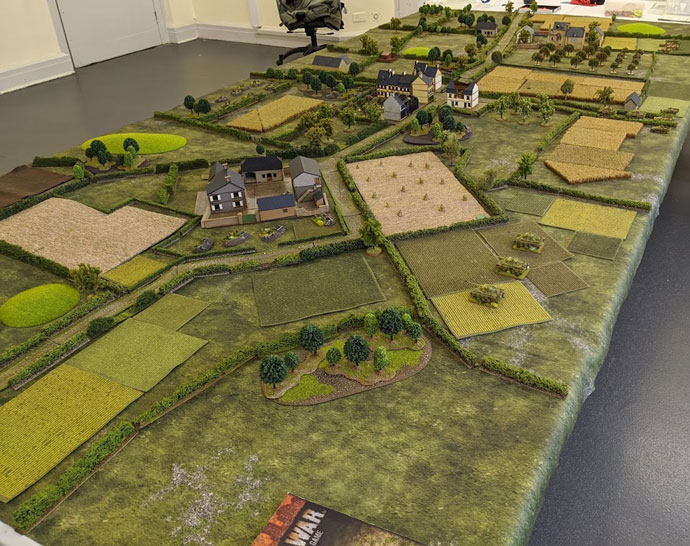 |
Pointless Learning
with James MacMillan
The D-Day: British upcoming release will undoubtedly bring with it a whole bunch of new players to the game; James offers some suggestions on how you might ease new players into the game through narrative play.
While Flames Of War is primarily a point based gaming system, when it comes to introducing new players to the game that competitive aspect can sometimes prove to be a barrier. Some players will benefit much more from a gentler, less competitive initial experience to the gaming system - which is where narrative gaming can really come into its own.
|
|
The key thing about this style of game is that the only person initially who requires a working knowledge of the rules is you. My own experience of using this method of gaming to introduce my wargaming club to Flames Of War has been very positive, with several club members now collecting their own armies.
|
|
While it may seem obvious, one of the main selling points that Flames Of War has, which is instantly recognisable to the vast majority of people, is a grounding in real world history. You would be hard pressed not to find gamers who have never seen a WW2 war film or TV series. This familiarity with the ‘tropes’ of the period can be used in a number of ways to help bring new recruits to the hobby. Whether your aim is to convince people who would otherwise avoid competitive gaming to play Flames Of War, to teach brand new wargamers the basics of wargaming or to help players of previous editions get a grasp on the newest edition, narrative gaming can help you when it comes to those crucial first impressions.
|
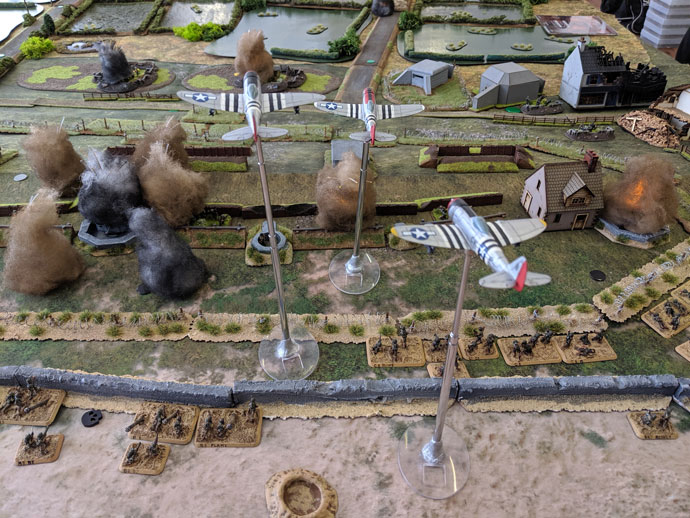
|
|
So, in this context, what is meant by narrative gaming? The simplest way to describe it is a wargame where your player (or players – this style of game works great in a multiplayer format) is the one actually ‘playing’ the game. You are, to use roleplay gaming terminology, the Games Master. Your role is to sensibly control the opposition, gently guide the players by being their walking rulebook and help them learn the basics of using their troops, the terrain, and the rules. The key thing to remember however, is that you are running a scenario rather than a competitive game and that your intention is not to ‘win’ but to provide a positive experience while providing a learning experience.
|
|
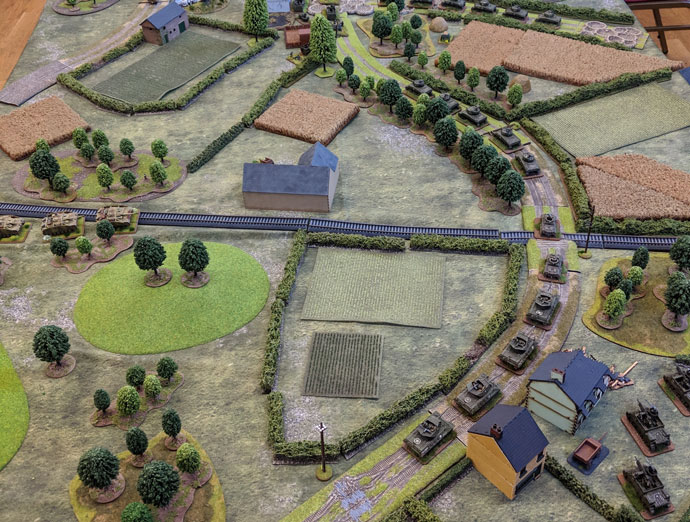
|
As such, while you control the opposition, your aim should always be to give your players a fun game rather than to beat them into submission. This differs from a standard game in that your intention is not necessarily to win the battle – it’s to interest a new player in the experiences that Flames Of War can offer. Always remember that a close-run thing or a victory are generally a much more rewarding gaming experience than a total rout!
How you implement this style of game can vary hugely depending on the audience and your available resources. For new players, simple situations are generally better, such as simple objective defence games. As an example using just the ‘Hit the Beach’ boxed set contents and on a small (say 4’ by 4’ table):
|
- A single platoon of US Paras has to defend an objective (a cluster of buildings or reasonable terrain feature), while slowly being reinforced by platoons of Sherman tanks arriving to support them. While the German Grenadiers arrive perhaps from random (dice defined) entry points along one table edge, to try and take the objective – again, with some Panzer IVs and Pak40s arriving over time.
|
|
So an easily recognisable and understandable scenario that most people will be familiar with from TV shows. Key things to remember while running this game for the player:
- Pacing is generally the key for you to maintain the players interest. When things look difficult for their side, bring on some help. When things are going too well, bring on some opposition. Let the reinforcements arrive when things are looking their most grim and don’t be afraid to recycle units.
- Don’t worry too much about the rule book or finding the exact rules, don’t let rules queries slow down play too much. You can always revisit after you have finished and correct next time.
- Don’t be afraid to let the opposition not be as good as normal – if in doubt, pick two options for what the opposition might do, and roll a dice – odds they try that doomed assault, evens they dig in and shoot… Remember, your job is to give an entertaining example of what the game is and how the basics of the rules work, not for the troops you control to win!
- Have a definite end to the game, either a turn limit or some other measurable and understandable goal.
- Don’t be afraid to ignore some of the ‘normal’ rules where it suits – if the Paras take heavy casualties, use the removed casualties to bring on some reinforcements in the form of scattered troops making their way to the fight. Or make some naval gunfire available. Or roll a D6 and announce that more reinforcements have arrived for either side.
|
|
The key thing about this style of game is that it’s more important to teach the basics about the turn sequence and basics of coherency, movement, shooting, orders and assault than it is to teach the ins and outs of formation morale, reserves, etc. Basically, don’t get too hung up on specific rules – the point is to have fun, teach the basics and encourage further interest. You can always revisit these areas in later games.
|
|
For more ‘advanced’ gamers, such as those returning to the hobby or with an existing strong knowledge of wargaming, the games can be more complex and larger. Perhaps to encompass your (and perhaps their) collections. It also allows you to use whatever you have in your collection, follow historical orders of battle or just use what seems cool for a scenario. If playing multiplayer games, I highly recommend having all the players on the same side against the opposition you control. Examples I have personally tried and which worked really well include:
An allied attack in Bocage country where:
- No Germans were deployed on the table at the game’s start. I drew a quick sketch map of where the units were hidden. Skill checks were used for spotting hidden units within line of sight that had not fired, with scout units getting a re-roll. German units that fired or moved into Line of sight became visible. Common sense applies to who can see what!
- I made use of the Pak Front rules to have single or paired A/T guns supporting German infantry positions, along with some hidden minefields (skill check to spot!) and MG bunkers.
- Most Allied commanders were given a small mixed force of infantry and tanks, with other players controlling specialist tanks, artillery and support arms.
- As ‘GM’ I knew that if the players were struggling, some of the hidden German units could be forgotten about. If they were winning easily, then German armour could be brought on to give them more to worry about!
- I tracked hidden German movement on the same sketch map, it didn’t have to be perfect!
- In this game, a key moment was when a single Panther tied up the advance for some time (one player had a single tank painted, so I worked it in to the game). When it was eventually knocked out in an audacious flanking move, the whole table cheered!
|
|
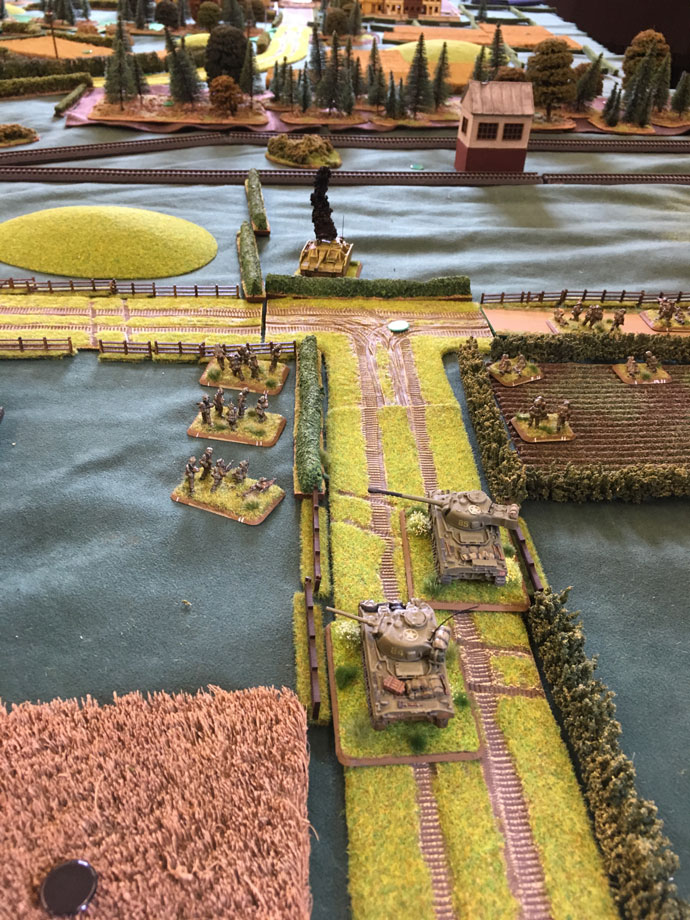
|
An allied ‘defence’ on a 12’ by 6’ table where:
- A US Armoured Division Combat Command had cut into German lines and was attempting to encircle trapped German units. Players controlled troops moving up the main route of advance. The Allied commanders were under orders to keep moving forward!
- Supply convoys were mixed in with the combat units
- US forces had to exit units off the short table edge at one end. Their whole force was strung out along the road covering the whole 12’ of table. Victory points were awarded for each unit moving off the table and deducted for each German unit escaping. Players had to juggle both priorities.
- I rolled to randomly bring on more allied forces at the bottom of the map, but what arrived was my choice!
- German armour and infantry units attempting to break out were trying to cross the 6’ width of the table by crossing the main route of advance. Entry points were randomised along the long table edge, while random German units were generated by shuffling the German unit cards and drawing one or two a turn. German units were focused on fighting their way through
|
|
An allied infantry company’s defence of a crossroads town on D+1 against a hurried German Armoured attack where:
- Players began the game outnumbered but in built up terrain, being drip fed reinforcements as they arrived from the beach and without artillery support for the first few turns (based on a historical account)
- Only German infantry could take and hold the objectives (all in buildings) – the players realised this and ignored the German armour and concentrated on the German infantry. Great lesson in the use of bulletproof cover, gone to ground and concealment rules!
- I got to use all of my recently painted Panzer IV’s and V’s! Being able to use your collection like this is great, but be careful! It’s easy to unbalance the game to where the players lose hope.
- The players had lots of great tactical conversations about laying out their defence, where to allocate reinforcements and when to engage or lay low.
- They killed off the German infantry and lured the German armour into carefully prepared A/T ambushes… Finally forcing them back.
|
|
Any of these examples could have been played using the standard points based gaming system, but by ignoring points, being a bit lenient with a few other rules and applying scenario specific house rules, players with no background in Flames Of War were able to participate, pick up the basics of the rules and use models they had in their existing collections – which I feel further helps with new players buy in. Within a few turns most people have the basics down (hugely helped by the unit cards and quick reference sheets).
Having gotten players to engage in these types of games, it’s then easy to then look at starting something like running a small Bloody Omaha campaign to pick up some of the other aspects of the game, trying some of the scenarios from the army books – or to look at setting up some army lists and trying the ‘standard’ competitive games most of us know and love! Handily, the Flames Of War boxed armies which include the rulebook and reasonable starting forces are also available should new players want to start their own collection. Of course, if your group prefers these types of narrative games, there is no reason to stop!
|
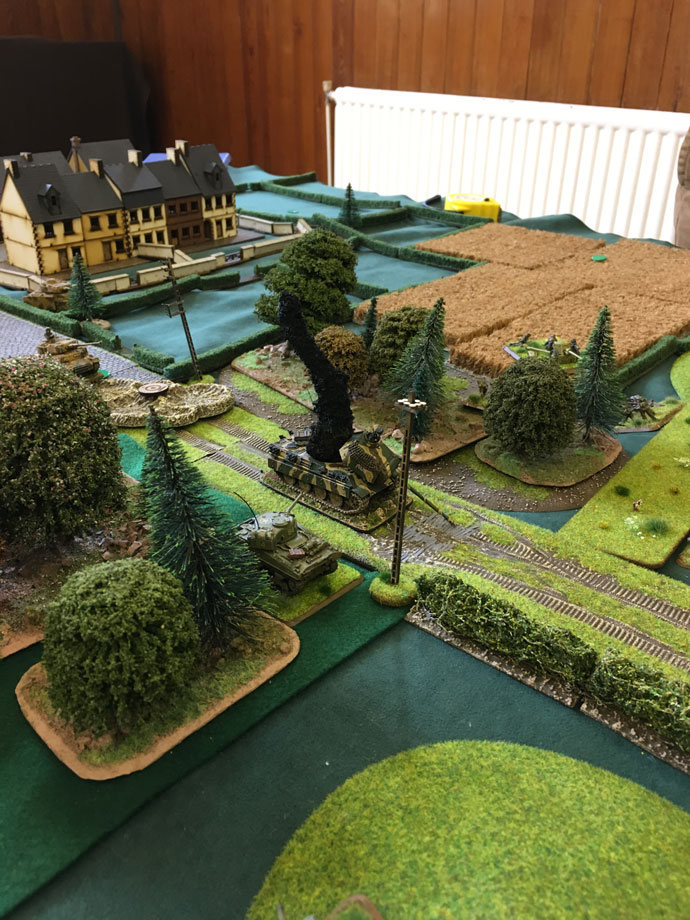
|
Last Updated On Friday, February 7, 2020
|
|
|